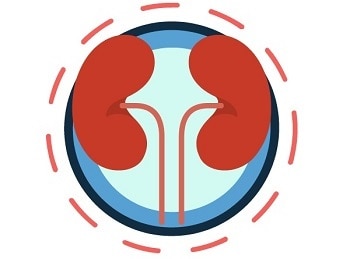Lupus

Lupus is a chronic autoimmune disease in which the immune system sees the body’s healthy cells as foreign invaders and attacks them, causing inflammation and harm to the affected organs. The most common type, systemic lupus erythematosus (SLE), affects about 200,000 US adults. Anyone can develop SLE, but it is more common in Black and Latina women and women of childbearing age (15–44 years).
The causes of SLE are unknown but are thought to be related to genetic, environmental, and hormonal factors. SLE is hard to diagnose because the symptoms are often mistaken for those of other diseases. Symptoms range from mild to severe, the most common being fatigue, skin rashes, fevers, and pain or swelling in the joints.
There is no cure for SLE, but symptoms can be managed. Treatment calms the immune system to prevent periods of increased SLE symptoms called “flares” and reduce or prevent joint and organ damage. Early diagnosis, effective treatments, and taking medicines as directed can help reduce the damaging effects of SLE. CDC conducts disease tracking research and supports programs to improve care and quality of life for people with SLE.
In the United States:

WOMEN
account for more than 90% of lupus cases, but men can also get lupus.

BLACK AND LATINA
women are 1.5 to 3 times more likely to develop lupus than White women.

KIDNEY DISEASE
is a common outcome of lupus.
CDC’s Approach
SLE is rare and hard to diagnose, so CDC funded lupus registries to count the number of children and adults with the disease and understand their characteristics. Results from the registries show that women are 9 times more likely than men to have SLE. Among women, Black women are 2.7 times more likely and Latina women are 1.4 times more likely to have SLE compared to White women.
CDC funds five long-term studies of adults and children with lupus. These studies monitor symptoms over time, the effectiveness of treatments, use of the health care system, development of other conditions, risk factors, and the effects of lupus on important life activities. Data collected guide decisions about the best ways to diagnose, treat, and manage lupus.
CDC funds the Lupus Foundation of America and the American College of Rheumatology to raise awareness about lupus and improve knowledge and skills among providers and self-management skills among patients.
Raising Awareness About Lupus

- Online informationexternal iconexternal icon is available on SLE signs, symptoms and diagnosis, lupus care and self-management, and lupus resources.
- Be Fierce. Take Control.external iconexternal icon is a campaign that raises awareness and knowledge of lupus symptoms in Black and Latina women aged 18 to 25 to help with early diagnosis.
- Understanding Lupusexternal iconexternal icon is a bilingual training program for promotoras (Latina community health workers) to increase awareness and understanding of SLE signs and symptoms in Latino communities.
- Playbook Projectexternal iconexternal icon is a step-by-step guide for community and student organizations with a campaign and detailed activities to spread key awareness messages about SLE.
- Nurses in K–12 schools are trained to care for students with SLE and support the shift from pediatric to adult care.
Enhancing Self-Management Skills

- Strategies to Embrace Living with Lupus Fearlessly (SELF)external iconexternal icon is an online program that teaches people with SLE how to work with their health care team and manage symptoms, stress, and medicines.
- Take Chargeexternal iconexternal icon, an educational email series, and The Expert Seriesexternal iconexternal icon, an online educational video series, are used to help adults newly diagnosed with lupus learn lupus care and self-management skills.
- Self-management education resourcesexternal iconexternal icon support better disease management, provider-patient communication, and quality of life.
Improving Health Care Providers’ Knowledge and Skills
- CDC’s partners are also:
- Educating non-rheumatology providersexternal iconexternal icon who serve American Indian or Alaska Native populations about SLE.
- Developing continuing medical education coursesexternal iconexternal icon to teach health care providers how to recognize, diagnose, and treat SLE.
- The Small Groups Projectexternal iconexternal icon and the Rheumatology Fellows Projectexternal iconexternal icon are connecting rural health care providers and rheumatologists to promote early diagnosis of SLE and improve care.
The 2015 National Public Health Agenda for Lupuspdf icon[PDF – 8 MB]external iconpdf iconexternal icon is a blueprint for the types of partnerships and actions neededa to help understand and treat SLE and reduce serious complications.